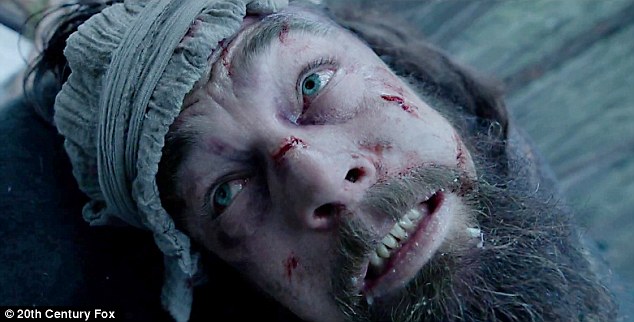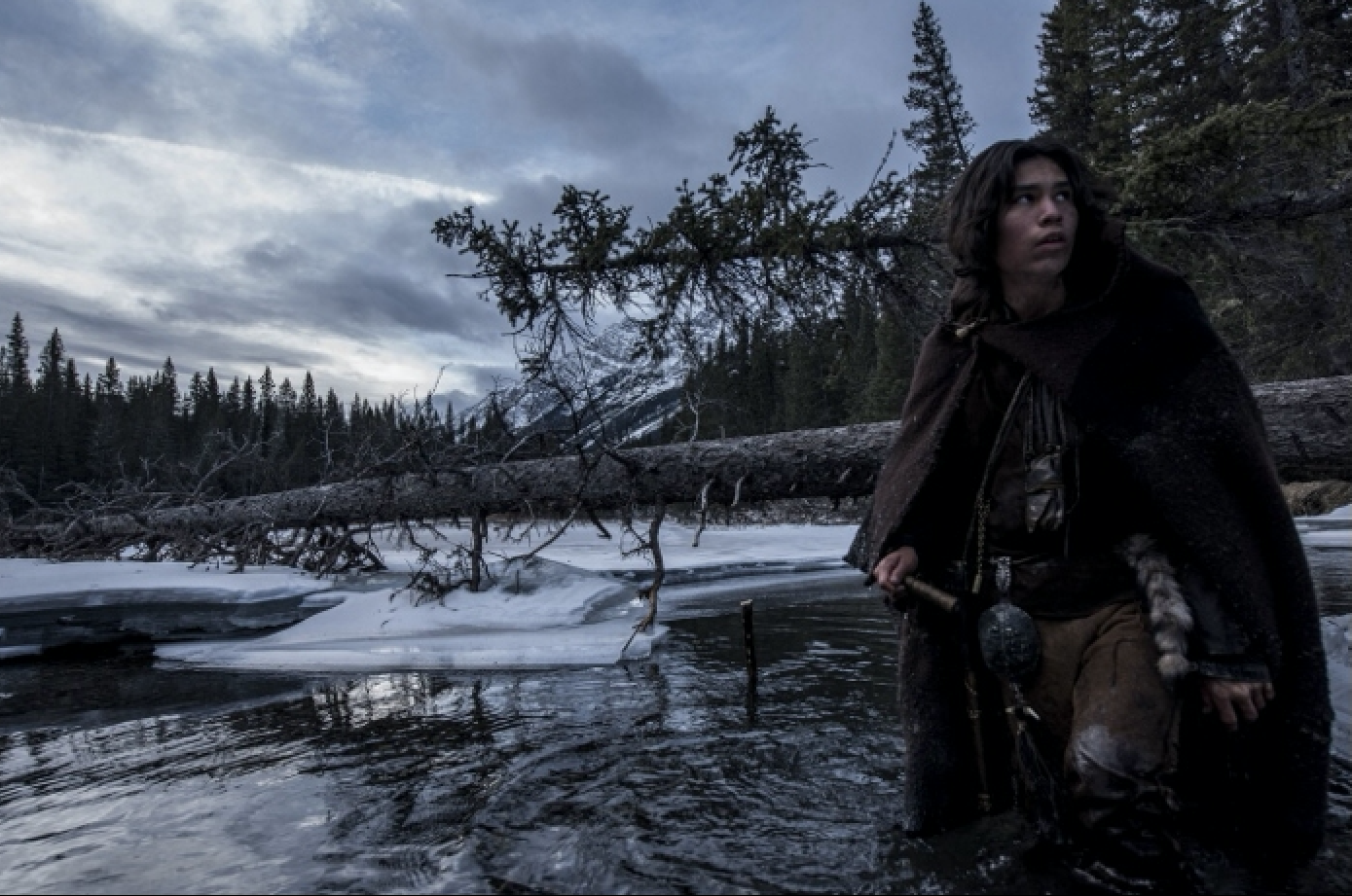What is the biggest change “The Revenant” makes from its source novel?
[SPOILERS AHEAD]
Alejandro González Iñárritu, director of The Revenant (2015), adapted the film’s screenplay—with Mark L. Smith—from Michael Punke’s novel The Revenant: A Tale of Revenge. The book tells the story of real-life frontiersman Hugh Glass, who survives a long journey after being attacked by a bear and left for dead by the fur trappers he was travelling with in the 1820’s. Iñárritu and Smith give Glass a half-native American son, Hawk (Forrest Goodluck), who is not in the novel and with whom he is travelling when he is attacked by a grizzly bear. Glass’ enemy in the film, fellow fur trapper Tom Fitzgerald (Tom Hardy), is supposed to stay with Glass until he dies of natural causes and provide him with a proper burial. Instead, Fitzgerald attempts to kill Glass, murders his son (who discovers Fitzgerald mid-attempt) and leaves Glass behind, alone and alive. These are the circumstances that set in motion Glass’ epic journey.

Making Glass a father is a significant narrative decision. Iñárritu and Smith write dialogue to support the idea that Glass is motivated to survive to avenge the murdered Hawk. Glass says, “That boy was all I had,” after finally reaching safety and trying to convince the fur company’s leader to take him on the search for escaped Fitzgerald. Glass efforts to survive alone in the wilderness are also intercut with flashback images of Hawk as a smaller child, suggesting that these memories are fueling his journey.
Glass’ lost son garners him favor from the audience. How often, for example, do we feel regret for a casualty reported on the news when we learn that the victim left parents behind to grieve the loss? Whether due to conditioning from the media or primal instinct, knowing of Glass’ parental status, we perceive him as the “slightly better guy,” if not “the good guy,” of the film’s characters. The audience roots for him to win out in the battle to survive, avenge his son, and kill Fitzgerald. Stories often make use of the grieving parent trope to excuse brutal acts of revenge by main characters—notable examples include Enough (2002), John Q (2002), and Kill Bill: Vol. 1 (2003) and Vol. 2 (2004).
Meanwhile, Fitzgerald is codified as the “only slightly worse” guy when Iñárritu and Smith complicate his character by revealing Fitzgerald’s near-death experience and partial-scalping at the hands of Native Americans. In his retelling of the event, the audience grasps how much trauma the ordeal caused Fitzgerald and understands that he is, in some sense, not responsible for his brutality.
Fitzgerald’s character is further complicated by his mentorship to a younger character in the film: Jim Bridger (Will Poulter), who also stayed behind to help Glass die. When Bridger suspects Fitzgerald of having fabricated the attack which led to the pair’s abandonment of Glass, he pulls a gun on Fitzgerald. Fitzgerald, who has already proven himself a killer, gets the gun away from Bridger but spares his life. Instead of killing the boy, Fitzgerald shows him how to make the rifle more ready for rapid fire in a deadly situation. The scene’s full meaning is ambiguous, as we don’t know whether Fitzgerald’s intent is to teach Bridger to survive in the Western frontier or to keep him alive as a witness for the pair’s story to the fur trading company. Either way, the moment challenges the “good father” vs “bad man” dichotomy enough to disturb the audience.
Still, while Fitzgerald’s later behavior challenges the good/bad guy divide, the choice to write in Hawk’s murder undeniably sets up the starting dichotomy. Without Glass’ lost son to lend some humanity to his character, we might view The Revenant as a vicious gladiator-style fight to the death with no one worth rooting for, since both main characters behave more like predators than people. In this way, Glass’ loss is a standard shorthand for redeeming the avenging protagonist and stopping us from viewing him too harshly, no matter what he does. In addition to furthering the plot, the murder gives us investment in Glass’ mission and makes Glass’ character relatable. Ultimately, too, when we learn that Fitzgerald has also suffered, the sympathy we’ve built up for Glass allows us to implicitly draw comparisons between Glass and Fitzgerald, thus emerging with a more complex understanding of the gradations of good and evil.

The film’s ending is also a narrative choice that departs from Punke’s novel, nor does it follow historical sources of what probably occurred, at least according to Punke’s historical note at the end. Although it’s obviously not the first time a director has chosen to alter a real story or a novel for cinematic effect, Iñárritu’s reshaping of the narrative allows for the Native American and white man plot lines to intersect one final time. The Arikara tribe (called the “Ree” in the film) — who initially set in motion the fur trappers’ hasty escape by attacking their outpost and subsequently trigger Glass’ injury and Fitzgerald’s crimes — appear just as Glass obtains the opportunity to kill Fitzgerald. At this moment, Glass remembers the Native American (a member of the Pawnee tribe, like Hawk’s mother) who helps Glass along his way and tells him revenge is in the creator’s hands. Glass releases Fitzgerald down the river to the Arikara. Some have called this a “spiritual” moment for Glass, who has travelled so far and overcome so much to avenge his son, only to release the final outcome to the so-to-speak Great Spirit, letting higher powers take care of Fitzgerald’s destiny. Since Glass rescued the chief’s kidnapped daughter, Powaqa (Melaw Nakehk’o), on his journey, the Arikara reciprocate by killing Fitzgerald, and the objectives of all parties are finally completed.
The scene calls to mind the ending of Iñárritu’s 21 Grams (2003), wherein a montage shows all the characters — connected by a car crash and brought back together again by a shooting — completing their arcs (through Sean Penn’s character dying, Naomi Watts’ moving on from her family’s death, and Benicio del Torro’s coming home to his wife). Both films’ endings conclude all characters’ paths at once through a final series of events that collectively resolves the individuals’ fates.
The invention of Hawk’s death makes this style of ending possible in The Revenant. Iñárritu and Smith write in Glass’ son so that they can tell a story that is relatable despite the gruesome brutality of the historical time period and use Hawk’s death as the catalyst and motivation for everything that follows. The event drives Glass on, fuels Fitzgerald’s guilt and lies, and allows Iñárritu to conclude with one of his strange, mind-bending endings, inspiring his audience to look for beauty, mystery, and human transformation in the most violent and depraved of stories.

